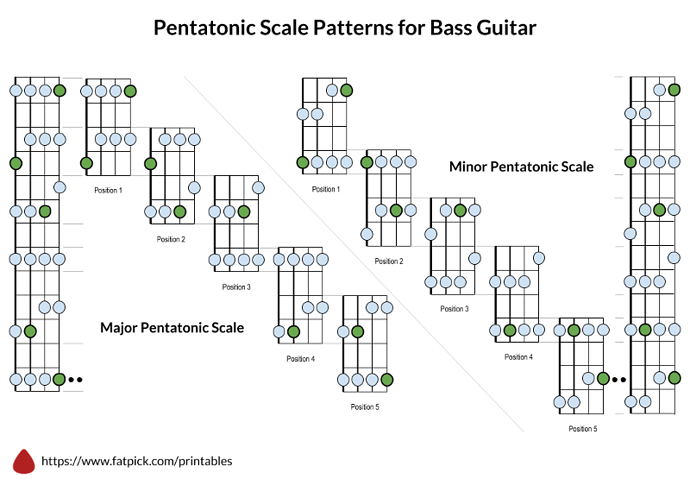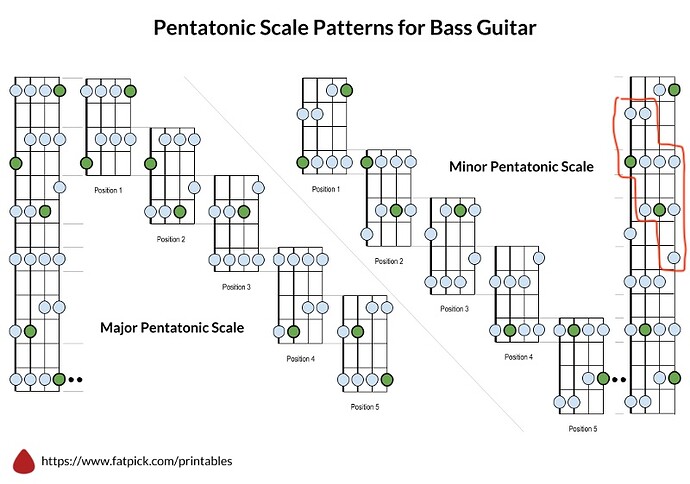I’m sure it’s discussed somewhere, I just can’t find it. When I was learning guitar I was taught the Minor Pentatonic, which lead up to the Blues Scale. There were 5 patterns, or positions, each one building on the previous one, so you could play on the whole neck. With only 4 strings on the bass that doesn’t work the same way. I just watched a YouTube video where a guy showed the first and 2nd position for the Blues scale on a 4 string bass, so I know it’s out there somewhere. Is it in the lessons or is there some place where I can bring it up and print it out? Once I learned that on the guitar it helped me so much, so would like to transfer that to bass if possible.
Thanks/
@JoshFossgreen has the best blues tutorial I’ve ever seen right here.
Am I missing something here? I learned the 5 pentatonic shapes on guitar. They are the same shapes on bass you just don’t have the B or high E string.
But the notes / shapes are exactly the same.
Just wasn’t sure if something changed because of missing the two strings.
Thanks for the help. ![]()
Thanks everybody, this was what I needed. ![]()
The great thing for transferring from guitar @HIPCHIP is all the theory / scales / intervals are the same.
You’re not starting from scratch , which is nice ![]()
This is basically what I was looking for. I asked Josh and the group about this, but I believe I was using the wrong terminology. Blues scales in all 5 positions is what I need. I, II, III, IV, and V, then it becomes I again. So I can play all over the whole neck. For when I am warming up before taking my next Josh lesson. This is so much fun!!! Thank you!~!!
Perfect. Printed this out and will post on my wall so I can look at it while practicing!
Thanks
These shapes are great to know, but it is where you connect them when you start to go from a more static approach around three or four frets to opening up the fretboard some more. For me, one of the most versatile shapes is hidden in the combined shape (I tried to box it in in red; sorry for my shaky freehand ![]() ). There is one shift in there, otherwise it is all two-fret distances.
). There is one shift in there, otherwise it is all two-fret distances.
Then you can also add the b5 for the blue note.
NB: Rich Brown has some good videos on pentatonics!
Thanks. This is starting to make sense. Just started with scales in the lessons.
That red box reminds me of NIB
Who or what is NIB?? ![]()
Ah, OK ![]() Yep, pentatontics are everywhere and super popular
Yep, pentatontics are everywhere and super popular ![]()



